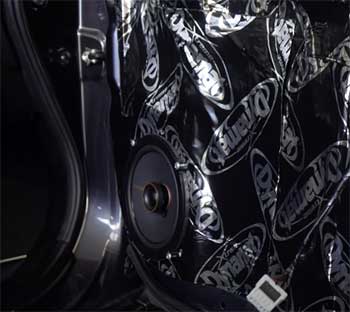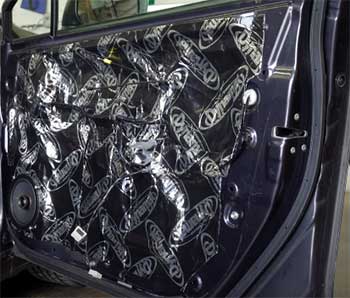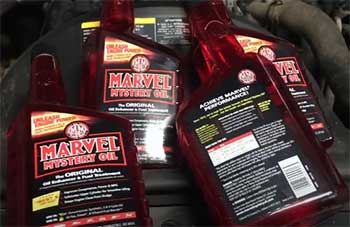If you’ve ever driven a car or truck and felt bombarded by the roar of the road or engine, you know just how annoying excessive noise can be. Luckily, there are products designed specifically to dampen noise and vibrations – sound deadening mats.
Two popular brands of sound deadening mat are Dynamat and Kilmat. But how do you choose between them? What are the key differences, pros and cons of each?
In this comprehensive guide, we’ll compare Dynamat and Kilmat head-to-head so you can decide which automotive sound deadener is best for your ride. We’ll overview how sound dampening works, then get into the product details from cost to performance and everything in between.
Time to turn down the volume!
A Brief Comparison Table
| Specs | Dynamat Xtreme | Kilmat |
| Cost | $1.99 per sq ft | $1.49 per sq ft |
| Thickness | 0.067 in (1.7mm) | 0.08 in (2mm) |
| Backing Material | Foil | Fiberglass |
| Heat Tolerance | Up to 400°F | Up to 428°F |
| Noise Reduction | Up to 21db | Up to 26db |
| Ease of Install | Very good | Good |
Key takeaways on Dynamat of Kilmat Sound Deadening
- Kilmat offers better value with cheaper price per square foot cost than premium Dynamat brand
- Kilmat claims slightly better maximum heat resistance at 428°F vs 400°F for Dynamat
- Independent lab testing shows Kilmat reduces more noise by around 2-5 extra decibels
- Dynamat rates easier to install cleanly while Kilmat fiberglass can be trickier
- Both dampen noise ranges effectively when properly applied to vibrating car panels
- For max noise performance, Kilmat is the top choice though Dynamat remains a proven industry leader
How Does Sound Dampening Work?

Before diving into the Dynamat vs Kilmat debate, let’s level-set on what exactly sound dampening mats do to reduce noise in vehicles.
These mats work by adding mass to thin, vibrating panels like doors, floors, firewalls, trunks, etc.
The heavier material constrains vibration, which results in less noise making its way into the cabin.
The mats also employ a butyl or asphalt layer that transforms acoustic energy into a tiny bit of heat. Less vibration = less noise.
Most sound deadeners feature a thin aluminum face, butyl adhesive bottom, and foil or fiberglass backing.
You clean and dry the installation area properly, peel off the backing, then firmly press or roll the mat into place. The adhesive bonds strongly to cut down on noise-causing vibrations.
In-depth Comparison of Dynamat And Kilmat Sound Deadening
Now that we understand the basics of how vehicle sound dampening works, let’s see how Dynamat and Kilmat stack up against each other. We’ll compare price, specifications, performance, and more between the two brands.
Cost
First up, let’s talk dollars and cents. How much is each brand going to set you back?
- Dynamat – $1.99 per square foot
- Kilmat – $1.49 per square foot
As you can see, Kilmat has an advantage out of the gate by being about 25% cheaper on a cost per area basis. Those savings can really add up when you’re soundproofing a whole vehicle. Still, it comes down to a lot more than just price…
Materials
What ingredients make up these noise-reducing mats? Here’s a quick rundown:
Dynamat
- Butyl adhesive
- Aluminum constraining layer
- Foil backing
Kilmat

- Butyl adhesive
- Aluminum constraining layer
- Fiberglass backing
The butyl adhesive and aluminum layers are common across both brands and serve the same vibration-damping functions.
Where they mainly differ is in the backing material – Dynamat uses foil while Kilmat uses thicker fiberglass.
Thickness
Just how thin or thick are each of the sound deadeners?
- Dynamat Xtreme – 0.067 inches (1.7mm) thick
- Kilmat – 0.08 inches (2mm) thick
Kilmat is slightly thicker at 2mm vs 1.7mm for Dynamat Xtreme.
Generally, a thicker mat adds more mass which leads to better vibration/noise control.
Installation
When it comes to sticking these sound damping materials in place, both Dynamat and Kilmat feature a strong, heat-activated butyl adhesive that bonds well. You do need to properly prep the installation surface by cleaning it completely and letting it fully dry before application.
Most users found both mats easy enough to cut with a utility knife and mold into place by hand or roller. Dynamat may have a bit cleaner peel-and-stick while Kilmat fiberglass backing leaves some users with fiberglass splinters. As always, safety gear like gloves and eye protection are a smart call when handling these products.
Heat Tolerance
How does temperature factor into the equation? Let’s look at the heat specs:
- Dynamat Xtreme – High heat tolerance up to 400°F
- Kilmat – High heat tolerance up to 428°F
As engine bays, firewalls, headers, and exhaust systems push up against hotter temps, noise dampening materials need to withstand the heat. Both products here have good heat resistance, but Kilmat claims to handle slightly higher temps up to 428 degrees Fahrenheit.
Flammability
Going hand in hand with heat tolerance, flammability standards ensure these mats meet safety thresholds.
- Dynamat – Self-extinguishing, meets FMVSS 302 flammability testing
- Kilmat – Fire retardant per SAE J369, self-extinguishing
The technical standards may sound complicated, but essentially both are considered fire-resistant. This gives reassurance that even when exposed to high underhood temperatures, they likely won’t catch fire or fuel existing flames. Any extra firewall safety gets a thumbs up!
Noise Reduction
At the end of the day, just how well do these sound deadeners work to cut down on noise?
Independent testing on 0.067″ thick Dynamat Xtreme:

- 18 db noise reduction on a steel panel at 1,000 Hz
- 21 db noise reduction on sheet metal panel at 125 Hz
Independent testing on 0.08″ thick Kilmat:
- 23 db noise reduction at 200 Hz
- 26 db noise reduction at 1,000 Hz
The numbers tell us that Kilmat’s slightly thicker mat seems to deaden both low and high frequency sounds better than Dynamat based on various lab tests.
Now keep in mind that real world noise damping can depend on your specific vehicle, install method, placement, and other factors.
But all evidence points to Kilmat being a top performer.
Also Read: How Dynamat And Damplifier Pro Sound Deadeners.
FAQ – Frequently Asked Sound Dampening Questions
Still hungry for more info on Dynamat, Kilmat, and vehicle noise reduction? This FAQ has you covered with concise answers to the most common questions.
Yes, Kilmat is considered an excellent automotive sound deadening product thanks to its reasonable cost, 2mm thickness, fiberglass backing, high heat/fire resistance, and most importantly – impressive noise dampening abilities per third-party testing. It bonds well when properly installed and reduces both high and low frequency road noise and vibrations.
While opinion varies, many experts and consumers agree that Kilmat currently offers the best overall blend of affordability, ease of use, and noise eliminating performance. Lab testing shows it dampens a wide frequency range by 23-26 decibels, outperforming leading brands like Dynamat Xtreme. If top-tier noise reduction is the goal, Kilmat is probably your best bet.
The short answer is “yes, mostly”. Dynamat carries a reputation as the pioneer and industry leader in the vehicle noise suppression category. Its butyl-based construction sticks and conforms incredibly well while reducing up to 21db of noise. For those wanting a proven brand name they can trust, Dynamat delivers on quality. Just don’t expect quite the same noise dampening capabilities as the less expensive Kilmat.
Absolutely – cutting down road noise from tires, suspension, chassis, exhaust and more is exactly what Kilmat does best. Testing shows it dampens common driving noises across a wide frequency range by over 20 decibels. Independent evaluations and customer reviews confirm Kilmat makes a dramatic difference reducing road noise and vibrations when properly installed inside doors, floorboards, wheel wells, trunks, etc. Your ride will sound much quieter on the highway after applying Kilmat sound deadener.
Also Read: Comparison of Noico And Siless Sound Deadeners.
The Verdict
We’ve covered a whole lot of ground comparing vehicle sound deadeners Dynamat and Kilmat. From cost and materials to performance and ease of install, how do they ultimately stack up against each other?
Dynamat Pros
- Established, time-tested brand name
- Foil backing leaves smooth finish
- Great high heat resistance
Dynamat Cons
- More expensive per square foot
- Not as thick or noise-reducing as Kilmat
Kilmat Pros
- Better pricing per square foot
- Thicker mat adds more dampening mass
- Testing shows excellent noise reduction
Kilmat Cons
- Lesser known brand than industry leader Dynamat
- Fiberglass backing harder to mold and leaves splinters
If premium brand reputation is most important, Dynamat Xtreme lives up to the hype. But we found that the newcomer Kilmat performs even better at dampening noise thanks to its thickness and construction.
More decibels reduced for fewer dollars seems like a winning formula.
So if you’re searching where to buy sound deadener online and noise performance trumps all, Kilmat takes the checkered flag over Dynamat. Whichever route you go, just remember to properly prep all bonding surfaces, carefully install the mats, and use safety gear along the way.
Your ride will sound so sublimely peaceful afterwards!

